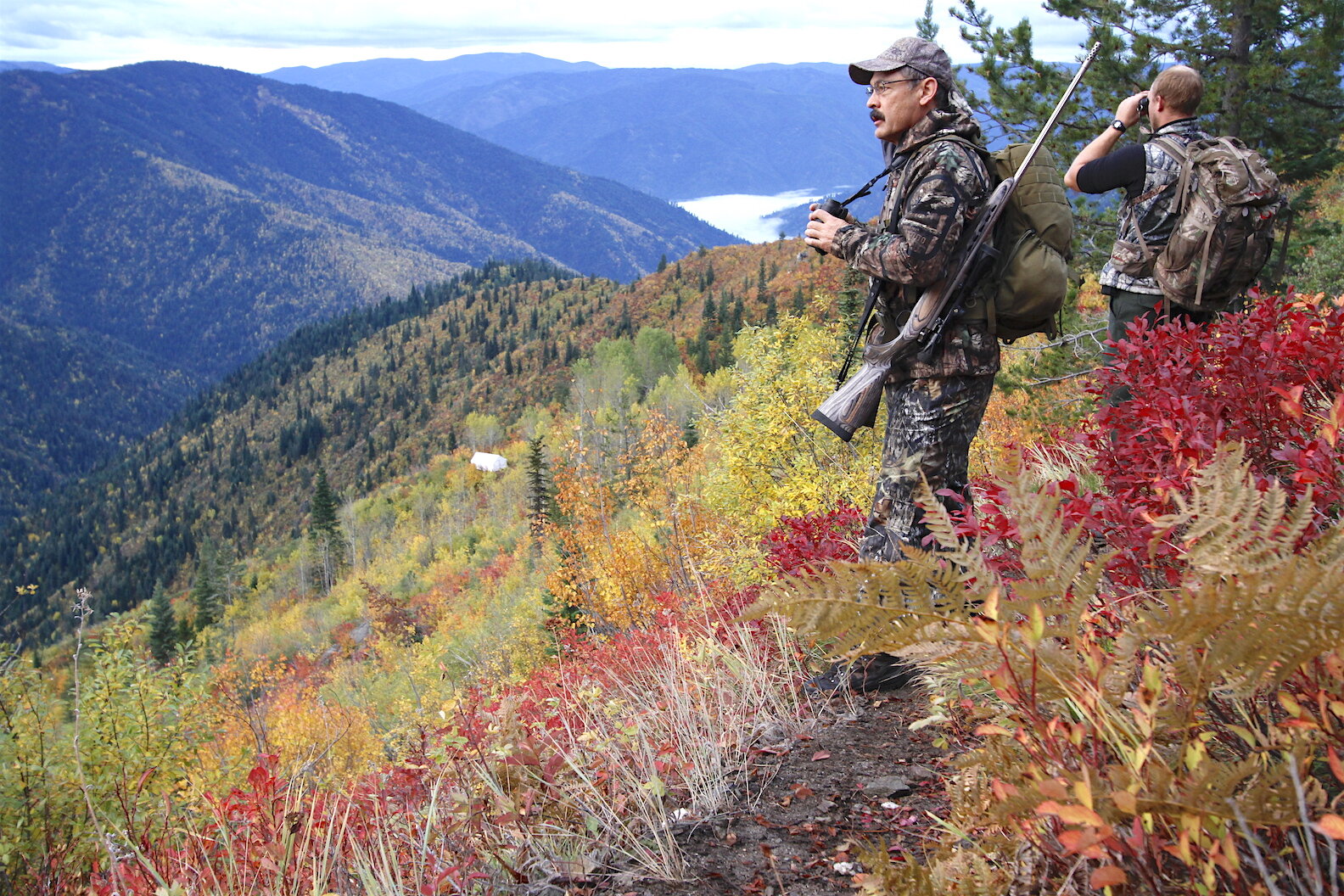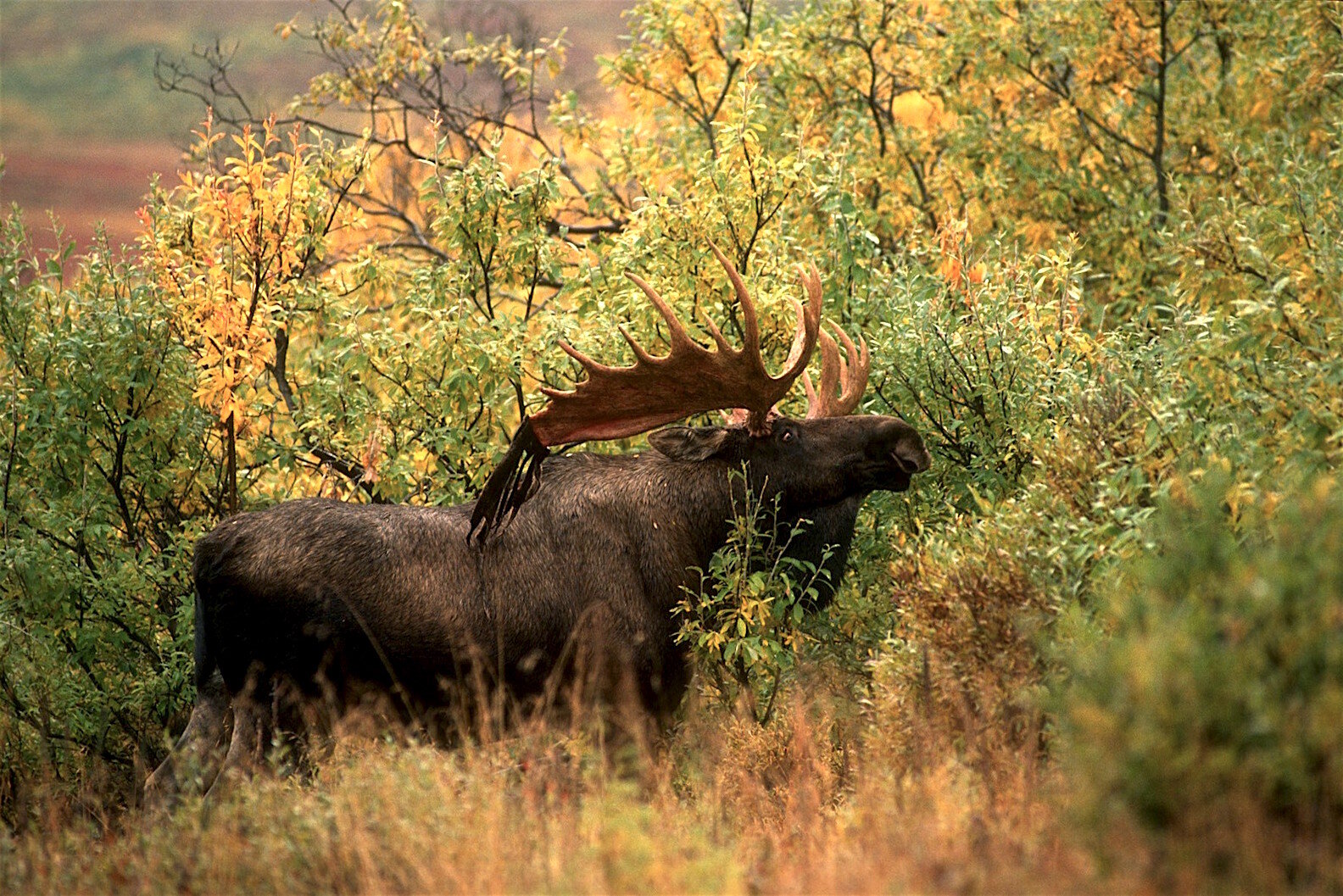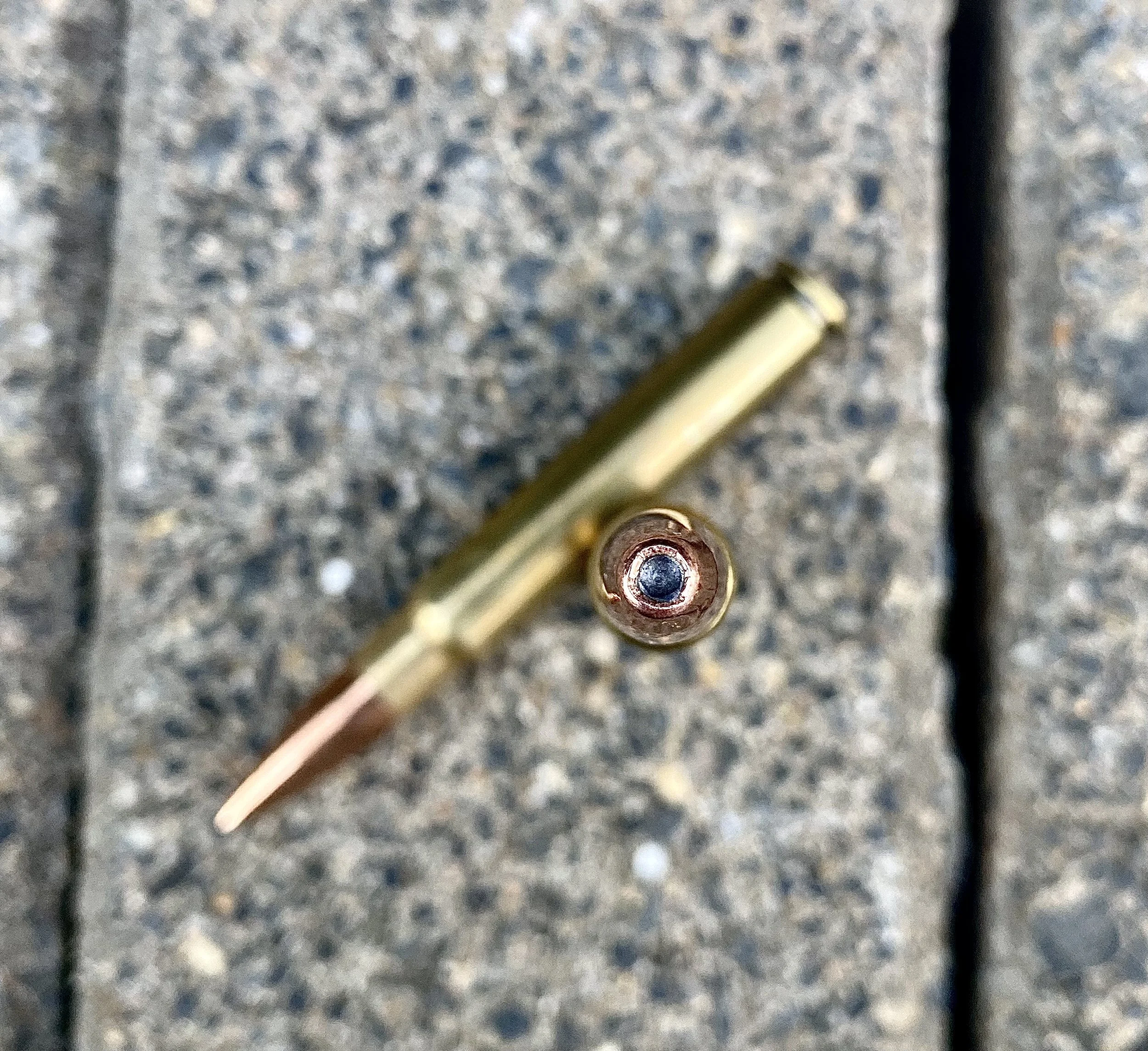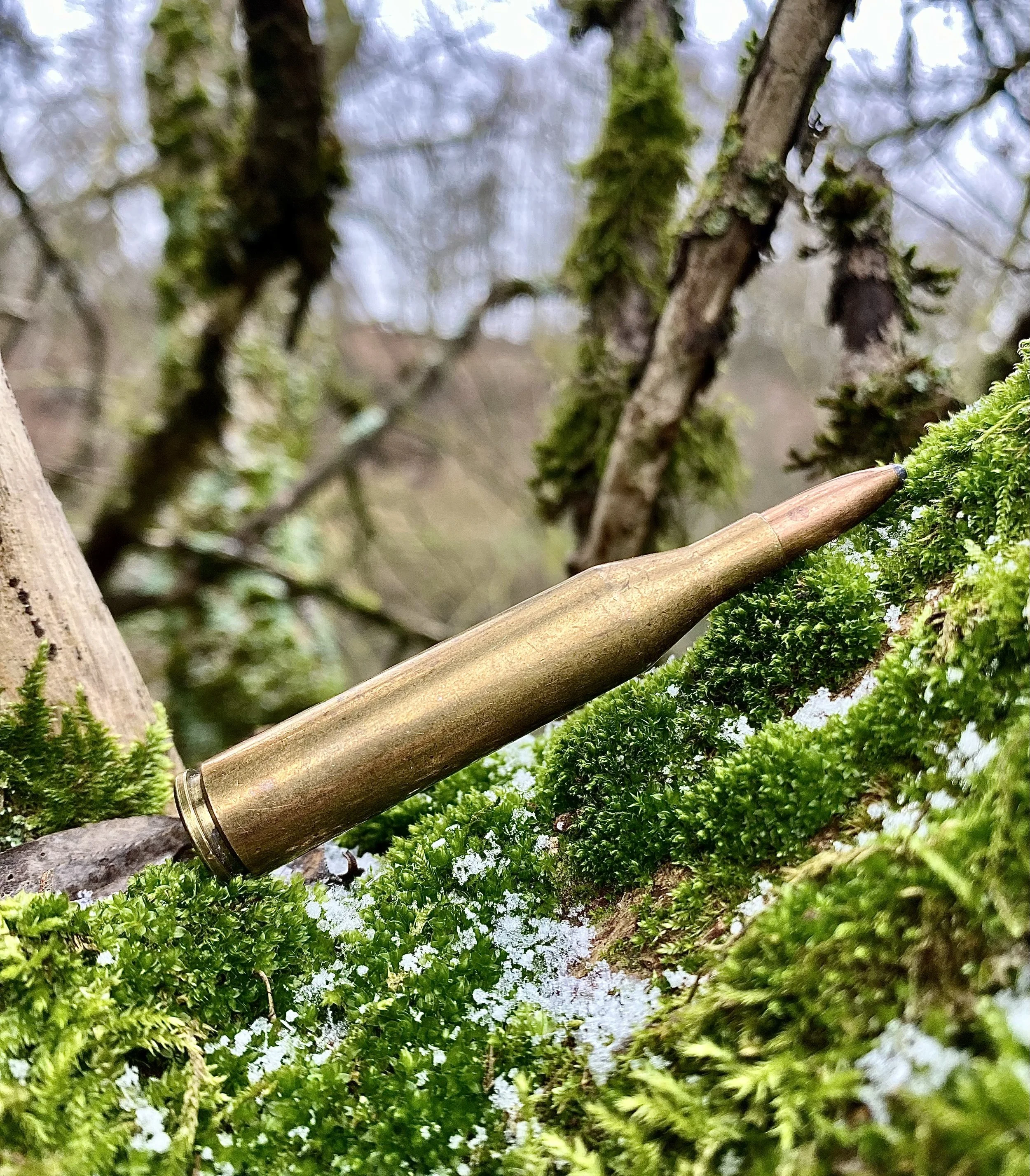Stop Long Range Hunting?
Is long range hunting really hunting?
There is no clear definition of the ancient, instinctive human activity called hunting. But there is plenty of argument over so-called long range hunting.
Perfect Shot, Imperfect Hunt
A gentleman on a social media site recently celebrated his daughter’s first elk. One shot, one elk, dead right there. Whoo hoo! Proud papa. But then the details came out. The young markswoman had made her clean, one-shot kill from a bit beyond 1,300 yards. Had she been elk hunting, or just elk shooting?
Long range hunting for this bull elk involved stalking and crawling to get within 115 yards of a big, bedded herd.
Certainly there are times and places where elk won't permit a close approach, but this bull artist Chad Poppleton and I stalked with Clark Adkerson was bedded near a 100-plus herd of cows, calves, and smaller bulls on an open, grassy hill in Montana. We crawled within 115 yards of the nearest elk and 130 yards of this fine bull.
Place Limits on Long Range Hunting?
Shooting exploits like this have been driving the long range hunting argument in recent years. I don’t think any of us should chastise or belittle a new or young hunter so long as they aren’t blatant law breakers — and even then it’s their mentor’s fault. So this is no condemnation of any young shooter’s long range success. Nevertheless, plenty of hunters maintain that “Targeting game at 800, 1,000, 1,500 yards isn’t hunting! No one needs to be shooting deer and elk past 400 yards!”
Short-range hunters say: “Four hundred yards is ridiculous. No true hunter needs to shoot anything past 150 yards, maybe 200.” To this, flintlock muzzleloader enthusiasts retort “A real hunter doesn’t need to shoot past 100 yards!” And they are roundly mocked by longbow hunters who consider 40 yards a stretch. And the few spear chuckers still out there sneer at anything past 15 yards.
Meanwhile anti-hunters insist “No humans need to shoot at any wildlife at any distance!”
Nature just shrugs and continues producing meat-eating predators by the millions.
Youth hunter poses with a big whitetail buck he shot.
If a new hunter cleanly takes game, I don't care what legal technique he or she used to do it -- I do not denigrate the achievement. Admire, praise and encourage new hunters. Model ethics by your behavior and mentoring, not be condemning theirs.
Real Infighting Instead of Real Hunting
Obviously Nature doesn’t care how Her predators kill. Aerial attack by eagles, mass attack by wolves, slow poisoning by snakes… But human hunters care. We are the only predator that prohibits certain hunting/killing methods like poisoning, aerial gunning, under-sized calibers, etc. Should extreme range shooting be included?
Internal debates about ethics have always riled and often divided hunters. This delights anti-hunting forces. A common position among many hunters is that we all hang together or we all hang separately. The counter argument is that if we accept questionable ethics such as hunting whitetails over bait or shooting elk beyond 800 yards we fuel anti-hunting fires. And the counter-counter argument is that the antis are never going to accept hunting in any form anyway, so why try to placate them?
Start By Defining Why We Hunt
So let’s ignore the antis and conduct this argument among conscientious hunters. Why don’t we begin by asking ourselves why we hunt? Here are some of my reasons. Your mileage may vary:
Fun. Yes, just plain fun. I enjoy hunting because I crave the physical and spiritual returns from interacting with Nature as an integral player, not a bystander.
Meat, horns, antlers, hides, bones. For decades my family has dined almost exclusively on free-range mammals, birds, fish, and even a few reptiles. This is healthier for us and Nature because we don’t insist agriculture replace wild habitats and animals with domestic. A soybean field might be great for tofu eaters, but it wipes out millions of native plants, insects, reptiles, birds, and mammals very year. Sustainable use of native species is our guiding principle. Preserving skins, horns, and antlers is an esthetic bonus.
See, smell, feel, explore new country. I relish being footloose in beautiful country and rich wildlife habitat from shortgrass plains to montane forests to swamps and marshes to deserts and tundra. I can do this with camera, binocular, or just eyeballs, but doing it while in pursuit of game makes it that much more intense and purposeful.
Exercise my predatory skills, my woodsmanship. Can I find game? Call it? Decoy it? Work the wind? Stalk close enough for a sure shot?
Exercise my marksmanship. Can I get into a solid shooting position and make a good shot? Caveat: I don’t hunt in order to testmy shooting skills, but to use the skills I’ve developed in training.
Image shows two hunters in big, colorful mountain terrain, illustrating why some of us hunt. Not long range hunting, but close-to-nature hunting.
Being fully absorbed in the beauty of Nature is one of the reasons I hunt. It has nothing to do with short or long range hunting except that closing the distance enhances the excitement and challenge. My rifle is the old Mossberg 4x4 in 270 WSM. It shot MOA but was heavier and bulkier than I liked. The new
with its classic stock lines is a better design.
Putting Long Range Hunting In Perspective
Given my reasons for hunting, I can establish my own limits on long range hunting shots. And that is generally 400 yards, rarely 500 (only once, actually,) with a modern, centerfire cartridge. (With a muzzleloader, handgun, or bow, it's obviously much less.)
Don’t misunderstand. This does not mean I’m incapable of shooting precisely beyond 500 yards. As part of my job I’ve attended and graduated from several long range shooting schools from Darrel Holland's in Oregon to FTW in Texas, Gunwerks in Wyoming to Branded Rock Canyon in Colorado. I’ve even won a few small (very small!) long range shooting contests.
So why do I limit myself to 500-yard hunting shots? Because of the inconsistencies inherent in extreme range bullet placement.
Long Range instructor Darrel Holland presents shooting school award to the author.
Darrel Holland get's half the credit for me winning Top Gun honors. Bryan Martin gets 25 percent for helping me with some trigonometry. Shooting consistently at long range isn't easy, but it can be mastered by most shooters. Being able to hit steel plates beyond 500 yards makes anyone a more confident game-shot under 500 yards. I highly recommend long range training and target shooting. Go for it!
Precision Rifles Don’t Equal Precision Bullet Placement
Yes, shooters today have amazingly accurate rifles and scopes and rangefinders and wind meters and ballistic calculators and... Our tools can help us deliver bullets to 10” targets as distant as 2,000 yards. After all, a rifle that shoots 1/2 MOA consistently will park all bullets into a 5.23” circle at 1,000 yards… if the barometric pressure is constant, the wind nil, the range and angle precisely measured, and the shooter solidly positioned to deliver a perfect shot. Done right, only the wind is an uncontrollable element. But there is one more variable over which the shooter has no control. Let's take a close look at it.
Timing is Everything
How long does it take a deer or elk to step forward or turn 90-degrees? A half second? Easily. And how long does it take a high-speed, high-B.C. bullet to leap from muzzle to 1,000 yards? Well, let’s check it out… One of my favorites, a 168-grain Nosler AccuBond Long Range, B.C. .616, launched at 3,040 fps from my Borden Timberline 7mm Rem. Mag. sails along for 1.3 seconds before reaching 1,000 yards. A pleasant, 10 mph, right-angle breeze would redirect that bullet 5 feet off point-of-aim. A good judge of wind with a Kestrel wind meter could compensate for that, but no one can compensate for an animal that moves. One step, one turn can easily change a heart shot into a gut shot, a broadside lung shot into a “Texas heart shot.”
Bull moose illustrates how even a large animal can move quickly enough to turn a 1,000-yard long range hunting shot into a botched shot.
Even a big, slow bull moose can move quickly enough to turn a sure, long range heart shot into a gut shot.
Recovery Challenges in Long Range Hunting
The second long range reality informing my 500-yard-maximum is difficulty in recovering the animal. What if the hit isn’t perfect and the elk or kudu hobbles off? How far can it travel before I get there? Even if I were able to run a ten-second 100 yard dash, I’d have to run ten in a row to reach 1,000 yards in 100 seconds. More than a minute and a half. Add in broken ground, brush, maybe a draw or small canyon and I’m realistically pushing anywhere from five minutes to a half hour. A grizzly could have claimed the carcass by then!
Assuming a clean, one-shot kill, what about finding the location? Landscapes tend to look different up close than from 1,000 yards away. And if there's an intervening creek, cliff, or canyon? More grass and brush than you initially thought? Is that distinctive tree you marked starting to look like all the others? Dead but unrecovered elk were part of the reason Idaho made 50 BMG an illegal cartridge for elk hunting years ago. Remove the temptation. Of course, 338 Lapua, 408 Chey Tac and many other long range cartridges/rifles are an easy workaround. This raises the issue of efficacy in trying to legislate ethics. (We’ll touch on that later if space permits.)
https://youtu.be/sHBToe2hVZc
Here's a video demonstrating the CZ Badlands rifle in 338 Lapua.
Buck Fever
Excitement leading to poor shooting isn’t exclusive to long range. In fact, being so far removed from the animal might reduce the chances for buck fever. But the farther the target from the muzzle, the more magnified tiny shooting mistakes. Twitch your trigger finger just enough to nudge the bullet off an inch at 100 yards and your bullet is angling off 10 inches at 1,000 yards.
Cheating Yourself
This is truly a deeply personal reason for resisting long range hunting, but a legitimate one. Even if one is capable of making a perfect, dead-right-there shot every time at any distance, doing so at extreme ranges cheats the shooter out of his or her hunt. Think about it. The activity we call hunting suggests a search, perhaps a stalk. It implies stealth, working the wind, staying out of view. In short, hunting tests our ability to remain undetected by our quarry while approaching within sure striking distance. The closer we get, the more nerve wracking and exciting our hunt becomes. Ask any bowhunter. Launching a kill shot from another area code, a distance at which the animal couldn’t smell you if you airmailed your scent in a perfume atomizer, couldn't hear you if you blasted Aerosmith’s “Dream On” from a boom box, and couldn't see you if you performed aerobatics on a trampoline while wearing a blaze pink-and-blue leotard... well, this suggests extreme range shooting is something other than hunting. In my opinion.
Photo shows he backs of two hunters belly crawling through grassy plains.
Crawling was, is, and aways will be an effective and immensely satisfying alternative to extreme range shooting at game.
By shooting game way waaaay out there, you cheat yourself out of the challenge, not to mention that heart-pounding thrill of getting inside the defenses of a creature much more alert and sensitive than you are to the smells, sounds, and sights of predators up to no good.
Insulating Layers
Long range shooting also cheats me by placing insulating layers between me and my hunt. This might seem silly to folks who take deep satisfaction from working with their many complicated tools, with testing their math and trigonometry skills to achieve solutions to challenging long range shots. I get that. But needing to operate a laser rangefinder, then a digital wind meter, then consult a weather report, an altimeter, and a barometer before dialing up a digital trajectory calculator app on a smart phone is not my favorite way of getting closer to the hunt. But that's just me. I prefer the atavistic satisfaction of a more instinctive approach.
Considering the scoped rifles and high velocity cartridges I usually hunt with, longbow hunters might sneer at me. But this is yet another example of why long range hunting is not such a cut-and-cried argument. Besides, any mountain lion would roll its eyes in disgust at any human too untalented to leap atop an elk and break its neck, which takes us to the next stage in this debate...
Photo shows prone target shooter with long range Bergara rifle, Kahles turret dialing scope, and laser rangefinding binocular studying app on phone.
Precision tools like this
, Kahles turret dialing scope,
Swarovski EL Range laser binocular
, and ballistic phone app make precision, long range hunting feasible, but do you really want all of that technology getting between you and your hunt?
Mandating Maximum Shooting Distances
Yes, I realize that this "get closer" philosophy can lead us into hand-to-antler combat. That is why it’s so difficult to define long range hunting, let alone legislate it. And I don’t think we should. Deciding when and where to take a shot is a personal decision based on everything from gear and skills to philosophy. As many accomplished long range hunters point out, 300 yards is too far for most hunters. Heck, 100 yards is too far for some. Most guides can tell you horror stories of clients who missed elk standing broadside at 50 yards. Buck fever is buck fever and a bad shot is a bad shot.
Image shows back of a hunter aiming at three pronghorns in the near distance, illustrating the point that even classic open country game doesn't mandate long range hunting.
Pronghorns are a quintessential long range hunting subject, yet of the two dozen or so I've taken, only one was farther than 350 yards when shot. Here Joe Arterburn rises to shoot after stalking within 30-30 range of three bucks
.
It’s easy to mount a moral high horse and look down on the foot soldiers, but its often hard to stay in that saddle. If you can, more power to you. But before you cast stones at the remaining 10 million U.S. hunters and limit them to a government-enforced maximum shooting distance, consider how that could be enforced. Are we gong to send a game warden out with each hunter? Is a 1,000-, 500-, or 200-yard limit really going to prevent everyone or anyone from trying farther?
Determining Your Bridge Too Far for Long Range Hunting
Debates about maximum shooting distances may never settle our differences, but they can put them in perspective and guide each of us into defining real hunting to our own satisfaction. And that, ultimately, is what matters. That and showing respect for ourselves, our hunting heritage, the animals we hunt, the ones we don't hunt, and all of this thrilling, challenging, wonderful biosphere we call Earth. Hunting isn’t an absolute like gravity or the speed of light. Within limits, each of us decides how we play the game, what restrictions and rules we want to follow in maximizing our success and enjoyment of this ancient, passionate human endeavor called hunting.
Choose well, friends. Then train hard to live up to your choices.
Ron Spomer has hunted around the world with a wide variety of long- and short-range tools.





















